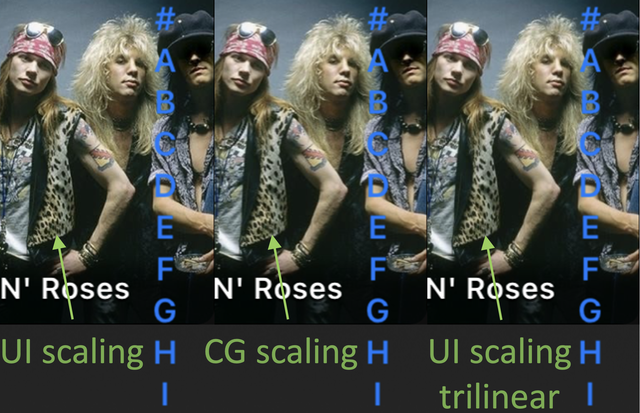You signed in with another tab or window. Reload to refresh your session.You signed out in another tab or window. Reload to refresh your session.You switched accounts on another tab or window. Reload to refresh your session.Dismiss alert
While analyzing memory consumption I also found some more interesting facts on the behaviour when caching pre-scaled images.
Memory impact of color space creation and scaling
If an image dimension is not changed (image and target resolution are identical), high memory consumption is driven by creating a new color space via CGColorSpaceCreateDeviceRGB(). If, in case of identical target/image resolution, no new color space is created, e.g. when the correct color space is already given, the memory consumption is far less (hundreds of MBs less for about 400 thumbs). But, once rescaling to a different resolution is done, this does not matter anymore. The memory consumption is always high in this case. Nothing I can do about it as far as I can see.
Pre-scaling done only half-way
What I realized, after working in-depth / reviewing the implementation, is, that thumb images are not really fully scaled to the target resolution, which would require content fill method to be taken into account at this stage. In fact, the image's aspect ratio is kept, and the thumbs are only scaled half-way to meet to minimum resolution requirements. Examples:
Target (300x300), image (600x900) -> scaled to 300x450
Target (300x300), image (900x600) -> scaled to 450x300
This will cause some scaling still do be processed by UIImageView, if target and image have different aspect ratios. My assumption is that this might cause some of the stuttering reported by users. It also causes the memory and flash consumption to be higher than desired as, in case of mismatching aspect ratios, always more pixels are kept as required.
Impact of UIImageView scaling
I reworked the pre-scaling, which also allows to remove doubled code, and to reduce the flash size of the image cache. But there are (slight) differences in image quality when doing all scaling in advance (using CGContextDrawImage(...)), which removes the scaling part of UIImageView. Obviously the CG scaling results in smoother results (more interpolation, less aliasing), whereas the UI scaling at first glance results in a sharper image.
When improving UIImageView's the scaling method by setting
this visual differences become less prominent. I take this as sign that the standard UI scaling shows some ringing or undesired granularity, and not more details. Still I prefer the UI trilinear scaling over what CG scaling achieves. But to reduce the load and stutter via scrolling the pre-scaling is needed, and using trilinear UI scaling is counter productive.
While analyzing memory consumption I also found some more interesting facts on the behaviour when caching pre-scaled images.
Memory impact of color space creation and scaling
If an image dimension is not changed (image and target resolution are identical), high memory consumption is driven by creating a new color space via
CGColorSpaceCreateDeviceRGB(). If, in case of identical target/image resolution, no new color space is created, e.g. when the correct color space is already given, the memory consumption is far less (hundreds of MBs less for about 400 thumbs). But, once rescaling to a different resolution is done, this does not matter anymore. The memory consumption is always high in this case. Nothing I can do about it as far as I can see.Pre-scaling done only half-way
What I realized, after working in-depth / reviewing the implementation, is, that thumb images are not really fully scaled to the target resolution, which would require content fill method to be taken into account at this stage. In fact, the image's aspect ratio is kept, and the thumbs are only scaled half-way to meet to minimum resolution requirements. Examples:
This will cause some scaling still do be processed by
UIImageView, if target and image have different aspect ratios. My assumption is that this might cause some of the stuttering reported by users. It also causes the memory and flash consumption to be higher than desired as, in case of mismatching aspect ratios, always more pixels are kept as required.Impact of UIImageView scaling
I reworked the pre-scaling, which also allows to remove doubled code, and to reduce the flash size of the image cache. But there are (slight) differences in image quality when doing all scaling in advance (using
CGContextDrawImage(...)), which removes the scaling part ofUIImageView. Obviously theCGscaling results in smoother results (more interpolation, less aliasing), whereas theUIscaling at first glance results in a sharper image.When improving
UIImageView's the scaling method by settingthis visual differences become less prominent. I take this as sign that the standard
UIscaling shows some ringing or undesired granularity, and not more details. Still I prefer theUItrilinear scaling over whatCGscaling achieves. But to reduce the load and stutter via scrolling the pre-scaling is needed, and using trilinearUIscaling is counter productive.Screenshots:

Edit: To put the above zoomed images into full context: https://ibb.co/30czCwP
The text was updated successfully, but these errors were encountered: